One mole of helium gas follows the cycle 1-2-3-1 shown in the diagram. During process 3-1, the internal energy (U) of the gas depends on its volume (V) as U=bV2, where b is a positive constant. If gas releases the amount of heat Q1 during process 3-1 and gas absorbs th amount of heat Q2 during process 1→2→3 them:
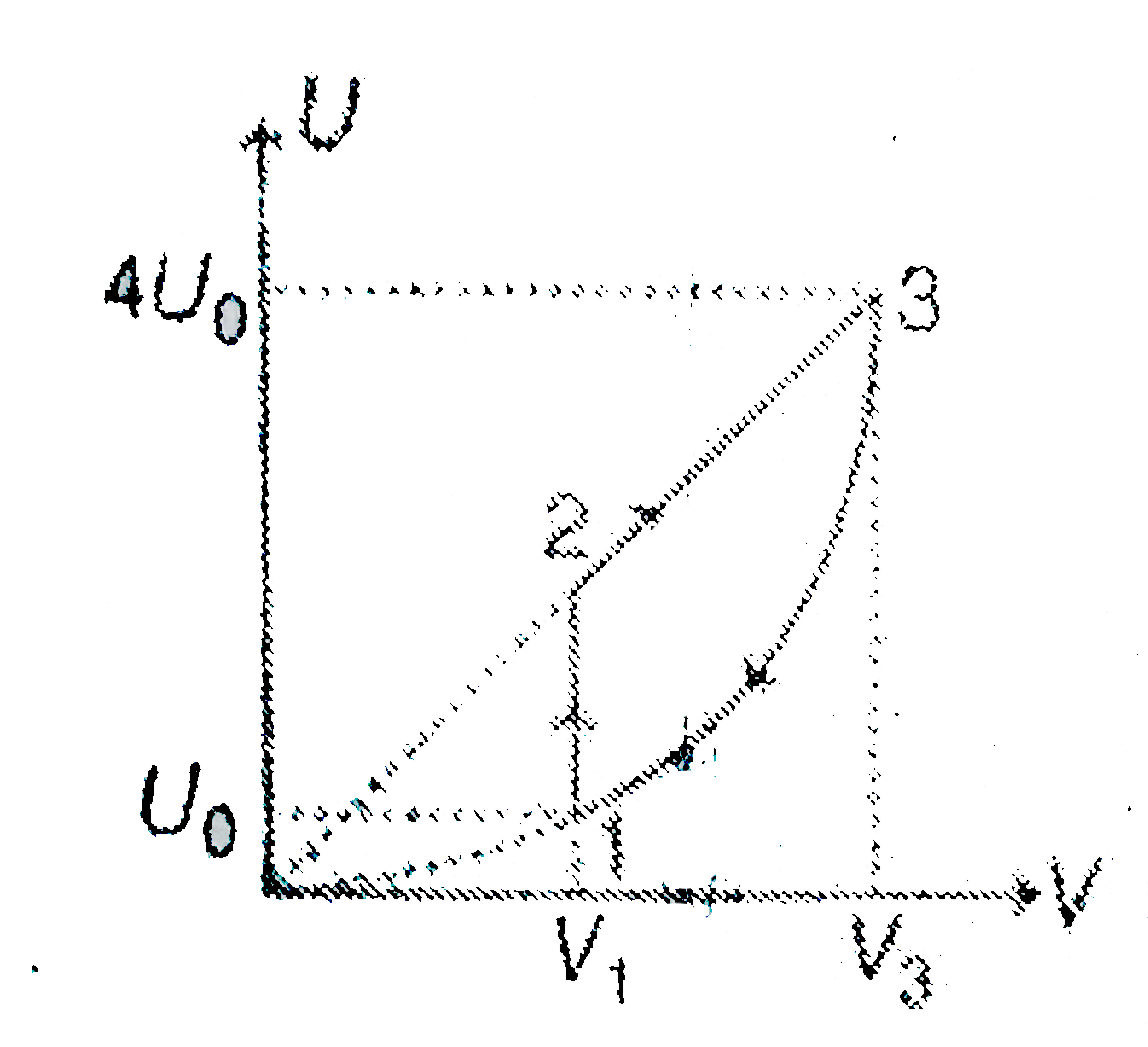
The value of O1/Q2 is
89
98
1213
none of these
The correct Answer is:C
U1=nCvT=3R2T⇒T1=2U03R 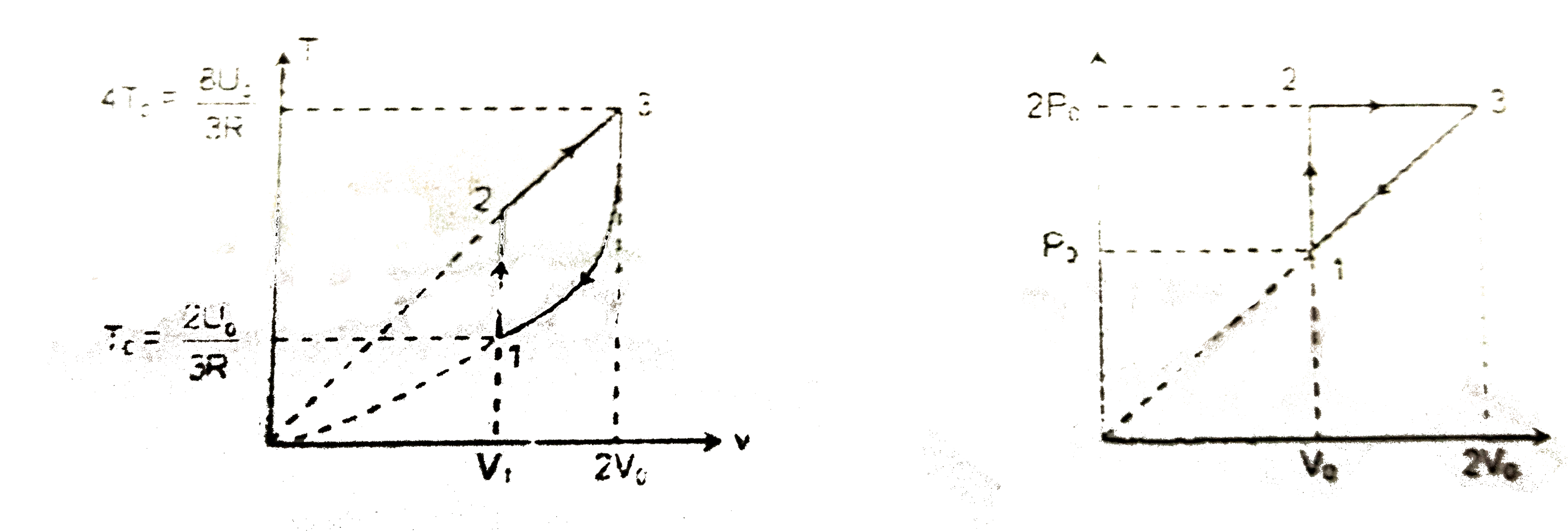
Process 3−1⇒U=bV2
⇒2bV213R⇒PV1R=2bV23R⇒p1=2bV3
When temperature becomes four times the volume becomes double
ΔU31=U0=4U0=−3U0
[12×3P0×V0]=−32P0V0=−32RT0=−3R2×2U03R=−U0
Q31=−4U0=−Q1
process 1−2⇒ isochoric process
W12=ΔU12nCv(T2−T1)=1×3R2(2P0V0R−P0V0R)
=3R2×P0V02=3RT02=U0
Q12=U0
Process 2−3⇒ isobaric process
W23=2P0v0=2×RT0=2R×2U03R=4U03
U23=nCV(T3−T2)=1×3R2
[4P0V0R−2P0V0R]=3P0V0=3RT0=2U0
Q23=10U03
Q2=Q12+Q23=13U03
Topper's Solved these Questions
Similar Questions
One mole of helium gas follows the cycle 1-2-3-1 shown in the diagram. During process 3-1, the internal energy (U) of the gas depends on its volume (V) as U=bV2, where b is a positive constant. If gas releases the amount of heat Q1 during process 3-1 and gas absorbs th amount of heat Q2 during process 1→2→3 them:
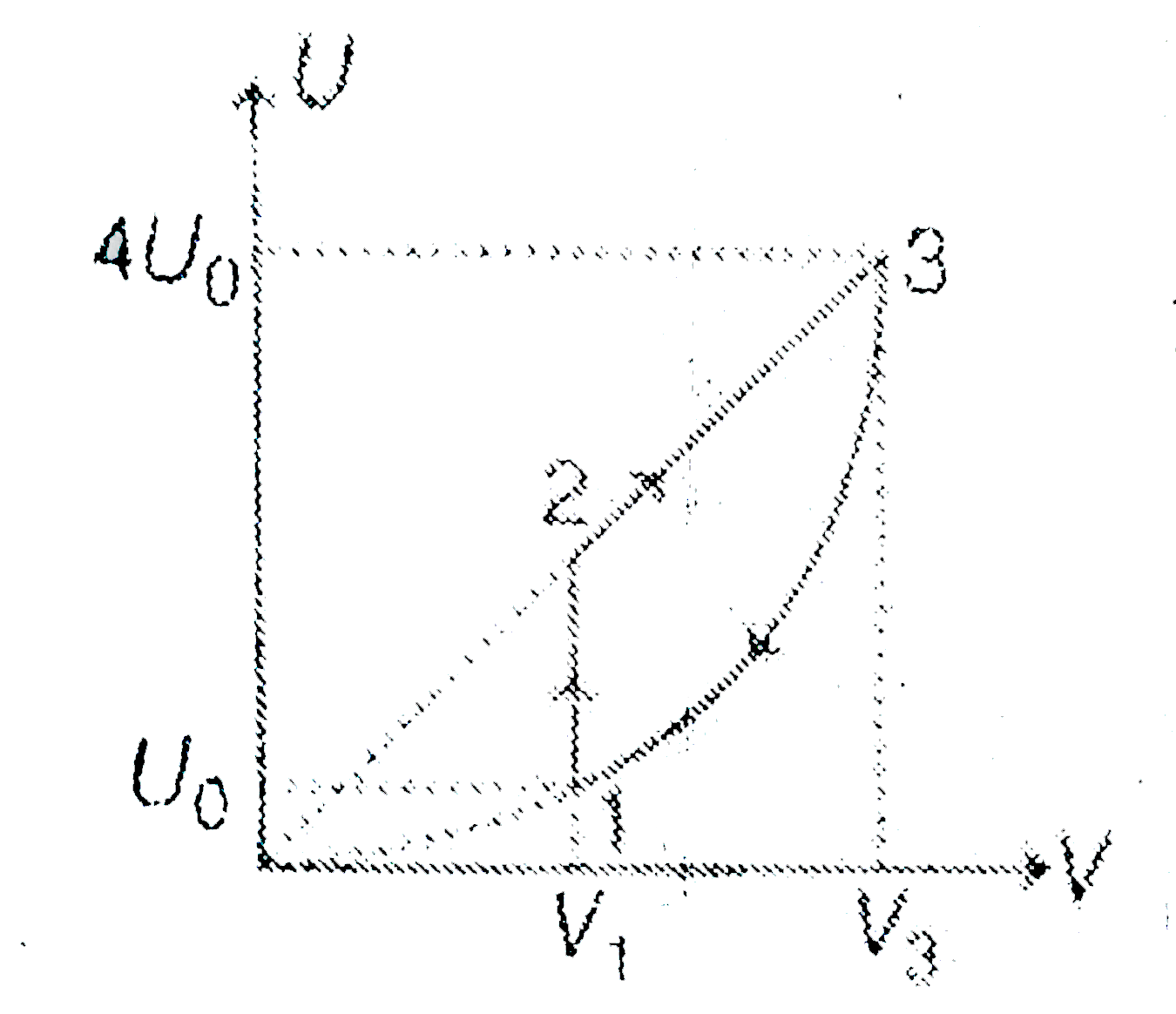
V3V1 isView SolutionThe temperature (T) of one mole of an ideal gas varies with its volume (V) as T=−αV3+βV2, where αandβ are positive constants. The maximum pressure of gas during this process is
View SolutionTwo moles of an ideal monoatomic gas is taken through a cycle ABCA as shown in the p - T diagram. During the process AB, the pressure and temperature of the gas vary such that pT = constant. If T1=300K and the amount of heat released by the gas during the process AB is Q=−xR, then the value of x is
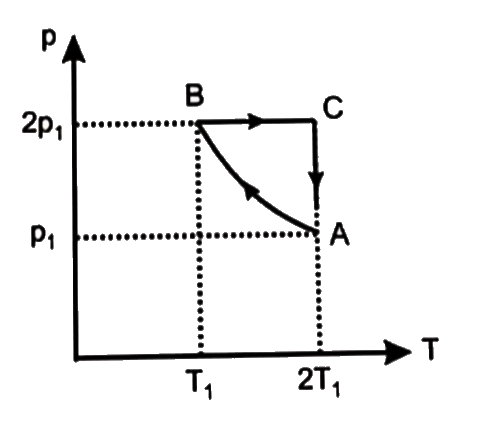 View Solution
View SolutionTwo moles of an ideal gas are undergone a cyclic process 1-2-3-1. If net heat exchange in the process is 300J, the work done by the gas in the process 2-3 is
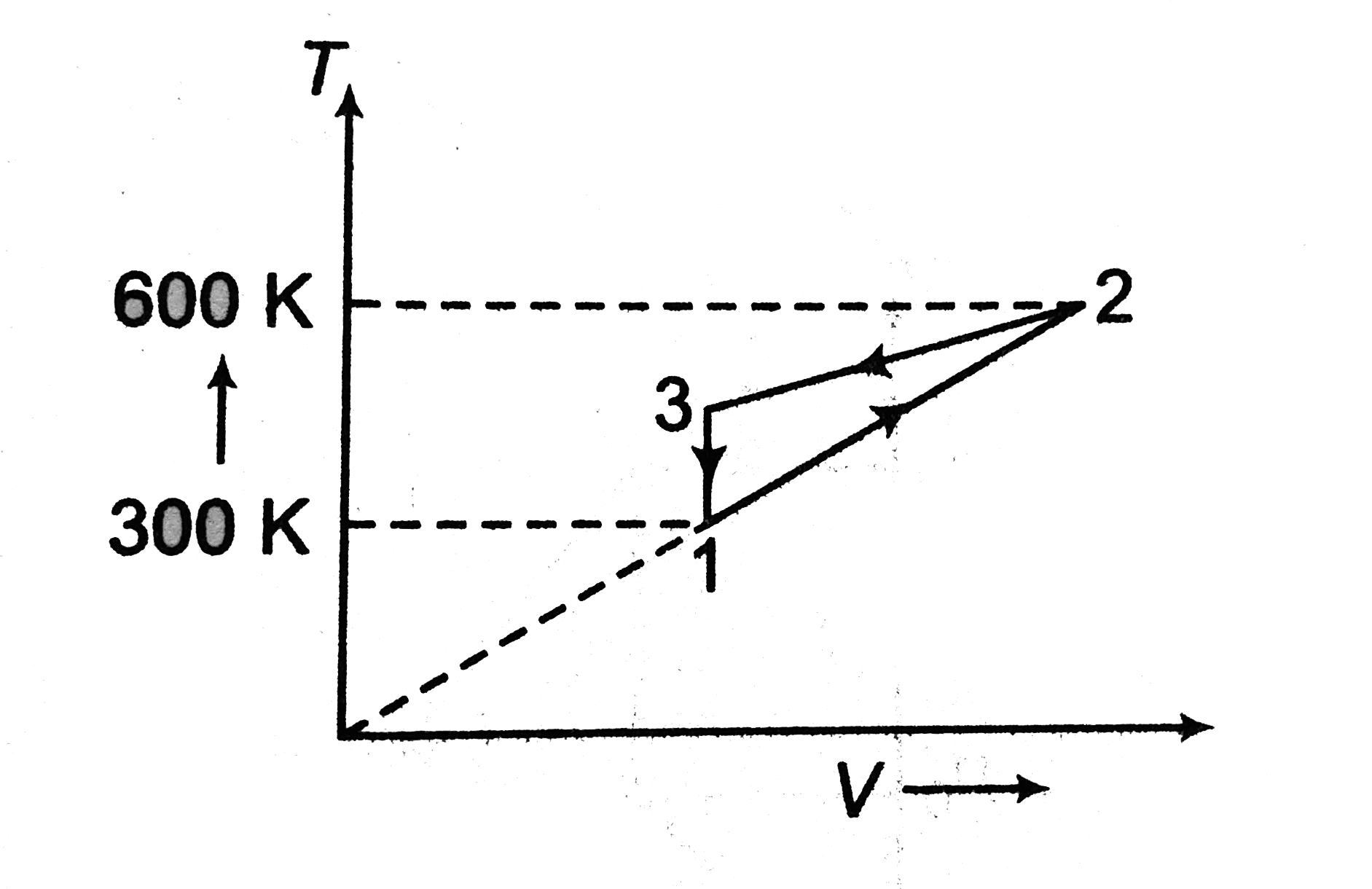 View Solution
View SolutionDuring the adiabatic expansion of 2 moles of a gas, the internal energy of the gas is found to decrease by 2 joules , the work done during the process on the gas will be equal to
View SolutionThe internal energy of a gas is given by U = 3 pV. It expands from V0 to 2V0 against a constant pressure p0.
The heat absorbed by the gas in the process isView SolutionThe P−V diagram of 2 gm of helium gas for a certain process A→B is shown in the figure. What is the heat given to the gas during the process A→B?
 View Solution
View SolutionA heat engine carries one mole of an ideal mono-atomic gas around the cycle as shown in the figure below. Process 1→2 takes place at constant volume, process 2→3 is adiabatic and process 3→1 takes place at constant pressure. Then the amount of heat added in the process 1→2 is
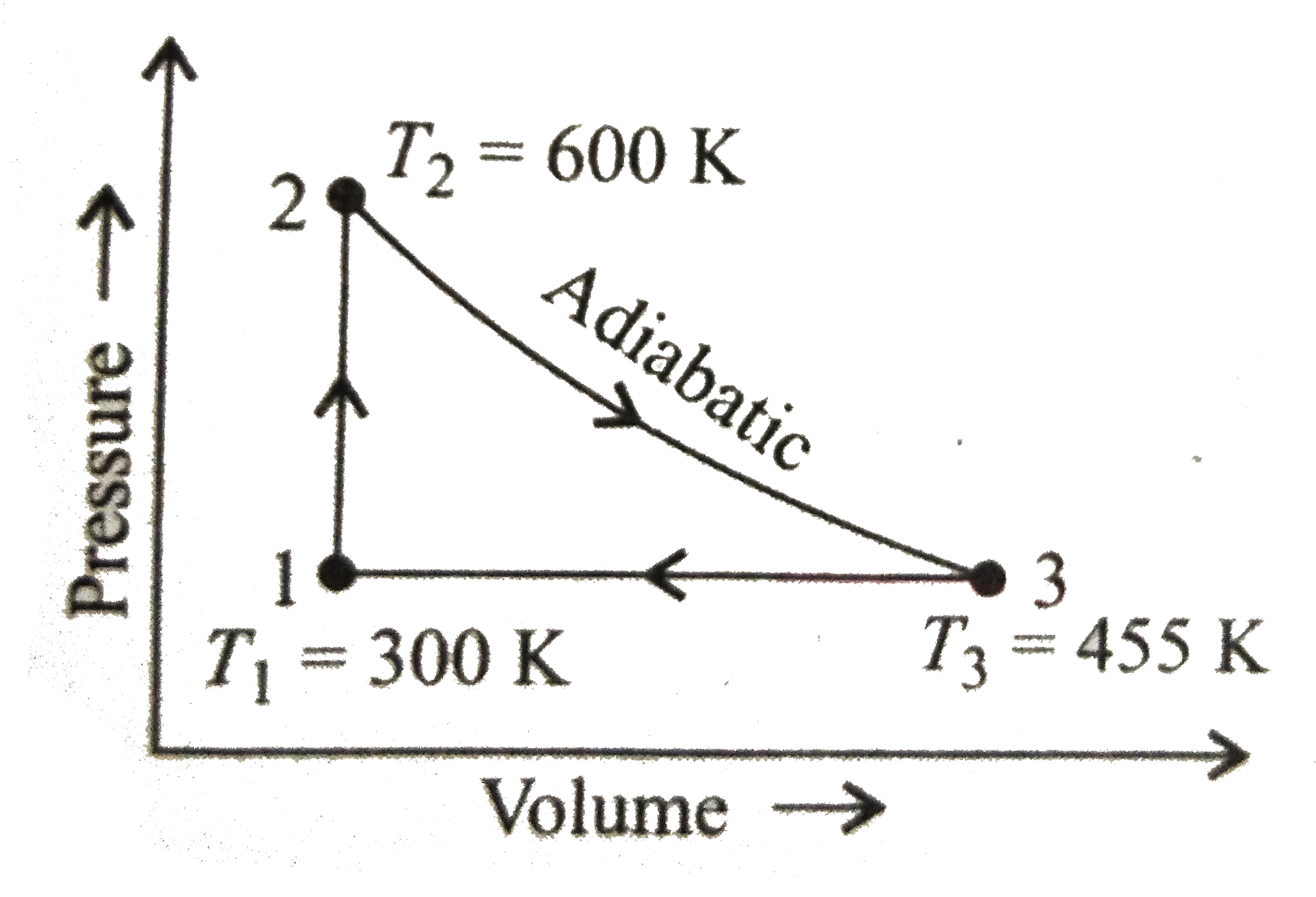 View Solution
View SolutionAn ideal monoactomic gas undergoes a process ini which its internal energy depends upon its volume as
U=a√V [where a is a constant]
(a) find work done by a gas and heat transferred to gas to increse its internal energy by 200 J.
(b) find molar specific heat of gas for this process.View SolutionAn ideal gas with adiabatic exponent γ=43 undergoes a process in which internal energy is related to volume as U=V2 . Then molar heat capacity of the gas for the process is :
View Solution

